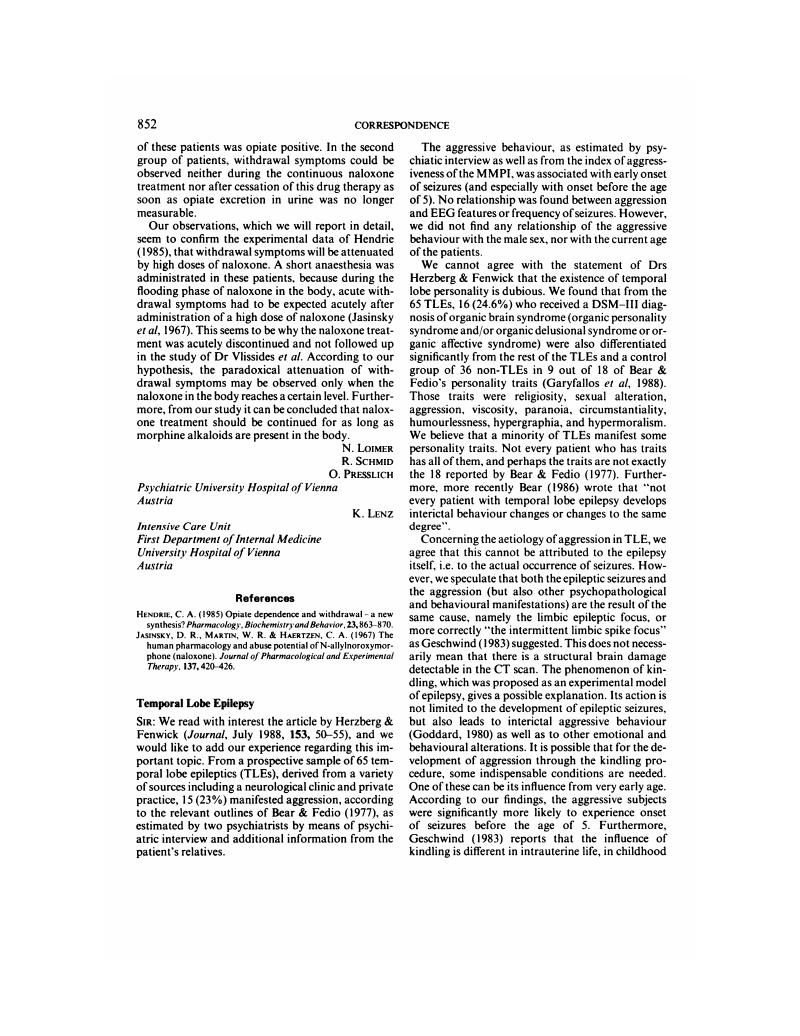No CrossRef data available.
Article contents
Temporal Lobe Epilepsy
Published online by Cambridge University Press: 02 January 2018
Abstract
An abstract is not available for this content so a preview has been provided. As you have access to this content, a full PDF is available via the ‘Save PDF’ action button.

- Type
- Correspondence
- Information
- Copyright
- Copyright © Royal College of Psychiatrists, 1988
References
Bear, D. M. & Fedio, P. (1977) Quantitative analysis of interictal behaviour in temporal lobe epilepsy. Archives of Neurology, 34, 454–467
CrossRefGoogle ScholarPubMed
Bear, D. M. (1986) Behavioural changes in temporal lobe epilepsy: conflict, confusion, challenge. In Aspects of Epilepsy and Psychiatry (eds Trimble, M. R. & Bolwing, T. G.). Chichester: John Wiley and Sons.Google Scholar
Garyfallos, G., Manos, N. & Adamopoulou, A. (1988). Psychopathology and personality characteristics of epileptic patients. Acta Psychiatrica Scandinavica, 78, 87–95.CrossRefGoogle ScholarPubMed
Geschwind, N. (1983) Pathogenesis of behaviour changes in temporal lobe epilepsy. In Epilepsy (eds Ward, A., Penry, J. & Purpura, D.). New York: Raven Press.Google ScholarPubMed
Goddard, G. (1980) The kindling model of limbic epilepsy. In Limbic Epilepsy and the Dyscontrol Syndrome (eds Girgis, M. & Kiloh, I. G.). Amsterdam: Elsevier.Google Scholar





eLetters
No eLetters have been published for this article.